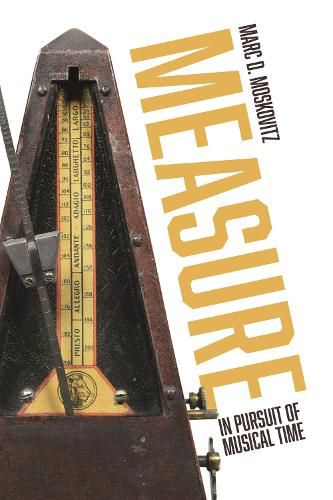Readings Newsletter
Become a Readings Member to make your shopping experience even easier.
Sign in or sign up for free!
You’re not far away from qualifying for FREE standard shipping within Australia
You’ve qualified for FREE standard shipping within Australia
The cart is loading…






The book opens with an exploration of musical time keeping as expressed in the artwork and musical writing of the Renaissance, sources that inform our early understanding of an age when music making was bound up with motions of the body and the pulsing of the human heart. With the adoption of the simple pendulum and the subsequent incorporation of tempo-related language, musicians gained the ability to communicate concepts of speed and slowness with ever-increasing precision. The seventeenth and eighteenth centuries witnessed the development of a diverse array of musical time-keeping devices, yet it was not until the nineteenth century that a single device combined the critical elements of accuracy, functionality and affordability.
Enter the metronome: portable and affordable, a triumph of innovation that enabled musicians to establish and faithfully reproduce musical time with accuracy and ease. From Beethoven to Ligeti, Moskovitz looks to a number of distinguished composers who used or refused this revolutionary machine and explores the complicated relationship that unfolded between the metronome, the musical world and practitioners in other disciplines who sought to exploit its potential.
Engagingly written, Measure: In Pursuit of Musical Time will appeal to professionals and amateurs alike.
$9.00 standard shipping within Australia
FREE standard shipping within Australia for orders over $100.00
Express & International shipping calculated at checkout
The book opens with an exploration of musical time keeping as expressed in the artwork and musical writing of the Renaissance, sources that inform our early understanding of an age when music making was bound up with motions of the body and the pulsing of the human heart. With the adoption of the simple pendulum and the subsequent incorporation of tempo-related language, musicians gained the ability to communicate concepts of speed and slowness with ever-increasing precision. The seventeenth and eighteenth centuries witnessed the development of a diverse array of musical time-keeping devices, yet it was not until the nineteenth century that a single device combined the critical elements of accuracy, functionality and affordability.
Enter the metronome: portable and affordable, a triumph of innovation that enabled musicians to establish and faithfully reproduce musical time with accuracy and ease. From Beethoven to Ligeti, Moskovitz looks to a number of distinguished composers who used or refused this revolutionary machine and explores the complicated relationship that unfolded between the metronome, the musical world and practitioners in other disciplines who sought to exploit its potential.
Engagingly written, Measure: In Pursuit of Musical Time will appeal to professionals and amateurs alike.